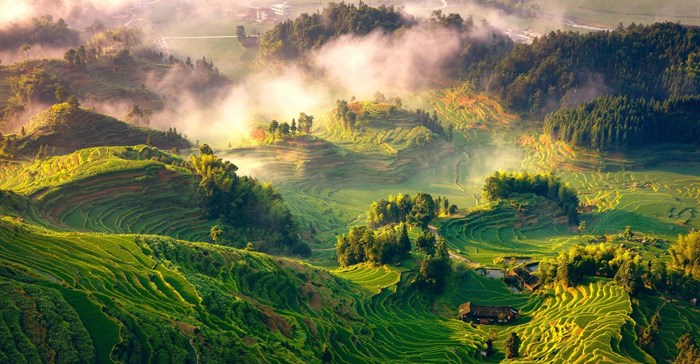Newly designated Globally Important Agricultural Heritage Systems
More agricultural landscapes.
The new additions bring to 50 the total number of GIAHS worldwide. The programme highlights unique ways that rural communities have over generations forged to foster food security, viable livelihoods, resilient ecosystems and high levels of biodiversity, all while enhancing remarkable beauty.
"The sites are not about a nostalgic past but offer solutions for the present and the future," Semedo emphasized. "GIAHS is also about innovation and opportunities, including broadening access to new markets and businesses such as eco-labelling, agri-tourism, youth empowerment to add value to our agricultural patrimony."
Among the new GIAHS sites are the first members from Europe and North America: An agro-sylvo-pastoral system in Barroso, Portugal; a unique way of making salt in Salinas de Añana, Spain; a millennial way of growing muscatel grapes in Axarquía, Spain; and a set of artificially developed farmland in Mexico City (Chinampas) based on oral transmission of traditional techniques widely used during the Aztec civilization.
Cultivating cultures
Globally important agricultural heritage systems embody managed ecosystems in which water use, soil health and other ecosystem factors are intricately linked, often in ways that require bespoke social governance rules regarding tenure, resource allocation and labour.
Heritage systems bring together the economic, social, environmental and cultural pillars of sustainable development, Semedo noted. Recognising them also underscores the leading role that smallholder farmers - their creators and custodians - play in promoting biodiversity and a host of other shared goals, she added.
The idea is to draw attention to the unique and ingenious ways that sustainability has been achieved in the most basic human activity, converting natural resources into viable food systems. The goal is to foster their dynamic conservation and to enable the smallholders who helped make them and serve as custodians of their legacy to keep their heritage alive amid new challenges such as urbanisation and climate change.
Evidence so far indicates that GIAHS designation as a heritage site can help conserve biodiversity and safeguard endangered crop varieties - both of which benefit food security worldwide - and revitalise local cultural activities, create employment and promote tourism. Heritage labels can be integrated with marketing strategies to boost demand and prices for local agricultural products. Certified rice grown in a heritage system in Sado, Japan - geared to providing refuge for the crested ibis - now commands twice the price of local equivalents.
A bridge to the future
Semedo called for taking the GIAHS programme to the next strategic level to create more synergies and valuable opportunities "for the great artists who have sculpted our past, design our present and will shape our future."
FAO's criteria for selection to GIAHS includes that sites be of global importance, having value as a public good in terms of supporting food and livelihood security, biodiversity, knowledge systems and adapted technologies, culture and, and outstanding landscapes. Many of the sites provide important ecosystem services that benefit people elsewhere, which bolsters the case for providing economic incentives for their conservation.
Some countries have even set up their own national programmes, including the People's Republic of China and Japan, whose governments have been particularly strong and generous advocates of the GIAHS programme.
Read more about the new entries here.












